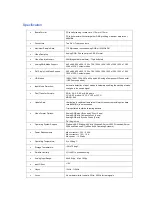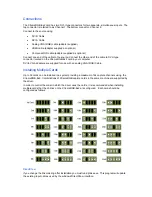
•
Ability to set up sources accurately (settings automatically saved)
•
Save a single frame to a file in one of the following formats:
BMP, JPEG, GIF, TIFF, PNG
•
a
single
frame
•
Record and playback captured data using DirectShow
•
Maintain the aspect ratio of the displayed data
•
Cropping
•
Display text over the data (on-screen display)
•
Command line interface
•
Help file documenting all features
Note:
The supplied drivers and software require that you are using:
•
Windows® XP, Windows® Vista, Windows® Server 2003, Windows® Server 2008 or
Windows® 7 (x86 and x64 Operating Systems)
•
CD / DVD ROM Drive
Using the card with other EMS products
The XtremeRGB-Ex1 captures the data and stores it in an on-board video buffer. This data is then
copied using DMA to the host system for display, storage or streaming.
When a EMS graphics card is used, the XtremeRGB-Ex1 transfers the data directly to the graphics
card thereby increasing performance. The XtremeRGB-Ex1 sends the relevant portions of each
captured image to each display channel and instructs each channel to use its graphics engine to
render the data. This fully utilises the hardware and dramatically increases performance.
When a Direct3D compatible graphics card is used the data can be transferred direct to the graphics
card in a similar manner to the EMS graphics card with the added benefit of non-tearing captures.
When the data is displayed on a non EMS graphics card, the XtremeRGB-Ex1 sends the data to
system memory or direct to the graphics card, dependant on the software used for display.
Summary of Contents for XtremeRGB-Ex1
Page 43: ...Models XtremeRGB Ex4 ...




























